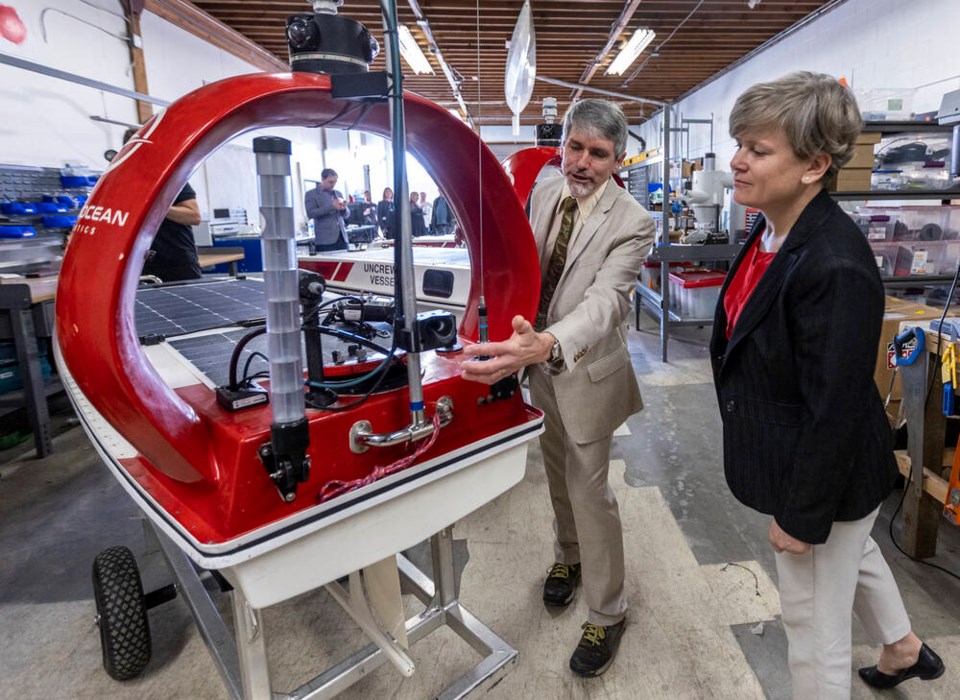JEFF GRAY
:format(jpeg)/cloudfront-us-east-1.images.arcpublishing.com/tgam/ASUHZBKUXVMU3KP3PYNCEEOY5E.jpg)
Neskantaga Chief Wayne Moonias, centre in green, speaks alongside First Nations community members during an improvised press conference inside the Ontario legislature at Queen's Park in Toronto on March 29
Two senior leaders of an Ontario First Nation were escorted out of the provincial legislature Wednesday, after loudly accusing Premier Doug Ford’s government of failing to consult them about mining in Northern Ontario’s “Ring of Fire” region.
The Ring of Fire, located about 550 kilometres northeast of Thunder Bay, has been a focus for the provincial government since significant mineral deposits were discovered there in 2006, and has long been championed by Mr. Ford as a key critical-minerals project. Calling it a “generational” economic opportunity for Ontarians, Mr. Ford has repeatedly vowed to accelerate mining in the remote area, to supply future electric-vehicle and battery factories in the south.
Currently, six provincial and federal environmental studies are under way on a proposed road into the Ring of Fire, which would connect the provincial highway network to the development – but could cost at least $2-billion. Mr. Ford’s government has pledged $1-billion, and repeatedly asked the federal government to match its commitment.
At least nine Indigenous communities are being consulted as part of that process, and two of them, Marten Falls First Nation and Webequie First Nation, are broadly in favour of development and are themselves leading an environmental assessment process on the building of a road.
Opinion: To develop Ontario’s Ring of Fire, we must develop trust with First Nations
Neskantaga First Nation says it wasn’t adequately consulted in key Ring of Fire environmental study
Several other First Nations whose traditional territories overlap on the Ring of Fire are vehemently opposed and argue they have not been adequately consulted.
The leaders of Neskantaga First Nation and four other First Nations, as well as about 80 community members, travelled to Queen’s Park from Northern Ontario, and pleaded with Mr. Ford on Wednesday to put the brakes on mining development.
“There will not be a Ring of Fire. [There has been] no free and prior informed consent,” Christopher Moonias, incoming chief of Neskantaga, told Mr. Ford from the gallery in Ontario’s legislature on Wednesday. “Doug Ford, you come and meet me.”
Mr. Moonias was escorted out of the room shortly after. Wayne Moonias, the current chief of Neskantaga, who joined Christopher in a chant against the Ring of Fire, was also escorted out.
Responding to questioning from MPP Sol Mamakwa, Greg Rickford, Minister of Indigenous Affairs, told the legislature that the Ford government is focused on “consensus and relationship building.”
Caitlin Clark, a spokesperson for Mr. Ford, said in an e-mail to The Globe and Mail that the Premier is in “constant communication” with Indigenous chiefs from across the province, but that his office is not aware of a formal invitation to meet with the First Nations communities that raised concerns on Wednesday
In addition to Neskantaga, Grassy Narrows, Wapekeka, Muskrat Dam First Nation and Kitchenuhmaykoosib Inninuwug (known as KI) also raised concerns in a news conference at Queen’s Park about Ontario’s open prospecting system, which allows individuals and corporations to amass mining claims without Indigenous consent.
Grassy Narrows Chief Rudy Turtle said that hundreds of thousands of hectares in additional claims have been staked over the past year or so in its traditional territories and that is having a detrimental environmental impact.
He said the community doesn’t want any mining development, fearing it would harm the environment and the land upon which the community depends for sustenance.
Grassy Narrows has waged a decades-long battle after a paper mill dumped large amounts of mercury into its rivers in the 1960s and 1970s, contaminating the First Nation’s rivers and supply of fish, and leaving many of its population suffering health effects from mercury poisoning.
While advanced exploration work requires Indigenous consultation before proceeding, currently, mining claims can be staked in Ontario without consultation, a reality Grassy Narrows would like to change.
Two First Nations in British Columbia have legally challenged the similarly open system for prospecting in that province. The First Nations say the system is unconstitutional, and that it violates the provincial government’s duty to consult. In April, the Supreme Court of British Columbia will hear their case against the provincial government.
The Ford government has shown no signs it is intending to change the rules of consent around prospecting. In fact, earlier this month, the government tabled legislation aimed at speeding up mine approvals.
The proposed changes would make it easier for companies to obtain permits to mine metals from tailings, allow companies to defer upfront payments on plans to close mines, and loosen restrictions related to the rehabilitation of shuttered mine sites.
Ontario has said that the measures would not compromise environmental standards and would not interfere with the government’s constitutional duty to consult Indigenous communities on mining projects.
Earlier this month, Neskantaga warned Ring of Fire Metals, the Australian mining company bent on developing the region, that it will have to use force against members of the First Nation before it would allow development.
Neskantaga said it was unable to participate in consultations on the Ring of Fire, or meet the process’s deadlines, in part because of the COVID-19 pandemic. With a population of just 400, Neskantaga is located about 430 kilometres northeast of Thunder Bay, and is among the most impoverished places in Canada. The First Nation has been under a boil-water advisory for more than 28 years.






 Currently, the world is producing around 400 million tonnes of plastic waste every year (UNESCO)
Currently, the world is producing around 400 million tonnes of plastic waste every year (UNESCO)











.jpg)









.jpg?ext=.jpg) (Image: gov.uk)
(Image: gov.uk).jpg?ext=.jpg) The signing of the agreement between Grupa Azoty Police, Ultra Safe Nuclear Corporation (USNC) and the West Pomeranian University of Technology (Image: Grupa Azoty)
The signing of the agreement between Grupa Azoty Police, Ultra Safe Nuclear Corporation (USNC) and the West Pomeranian University of Technology (Image: Grupa Azoty)